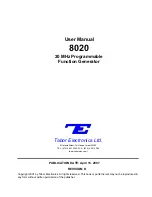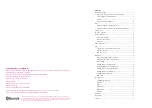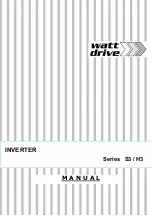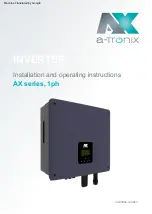
User Manual
Appendix C
Aspect Ratio Configuration Process
Page C-2
(Rev. 4.1/ SW v1.60/ December 2006)
When fitting the received Video signal A/R to the monitor A/R, the following
three PVR 6000 parameters values must be set to achieve the required
conversion:
•
WSS
•
Monitor Aspect Ratio
•
Interpolation
WSS
(W
IDE
S
CREEN
S
IGNALING
)
The purpose of the WSS signal is to inform the destination monitor of the
received Video A/R. The PVR 6000 extracts the WSS information from an
operator-selected source, generates a new WSS signal (see ‘
WSS Signal
Generator
’ in Figure C-1), and outputs it to the monitor.
The WSS menu in the PVR 6000 contains two items:
•
Source
– from which the PVR 6000 extracts the WSS information. The
available options are:
DISABLE, TV MONITOR, E.S. (EN-301-775),
and
VIDEO
(see WSS explanation in Section
4.2.6.2
for further details).
•
Line1
– Video line into which the PVR 6000 inserts the generated WSS
signal (see
WSS
explanation in Section
4.2.6.2
for further details).
M
ONITOR
A
SPECT
R
ATIO
This parameter informs the Conversion Machine of the destination monitor’s A/R.
This is one of two parameter values which the Conversion Machine needs for its
operation (see Figure C-1).
The available options are:
VIDEO SOURCE, 16:9, 16:9 BOX,
and
4:3
(see
Monitor Aspect Ratio
explanation in Section 4.2.6.1 for further details).
I
NTERPOLATION
This parameter sets the method of interpolation which the Conversion Machine
will use when converting the Video Stream.
C.3
T
ABLE OF
C
ONVERSIONS
After setting the values of
WSS
,
Monitor Aspect Ratio
, and
Interpolation
,
the PVR 6000 receives all required A/R information for re-creating the image.
Table C-1 and Table C-2 details the format of the image after conversion in all
PVR 6000 available settings combinations, and depending upon the incoming
signal's A/R.










































